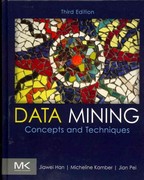Answered step by step
Verified Expert Solution
Question
1 Approved Answer
[ 1 2 marks ] This question involves Boolean algebra. Solutions must show sequential equivalent Boolean expressions. Moving from one expression to the next in
marks This question involves Boolean algebra. Solutions must show sequential equivalent Boolean expressions. Moving from one expression to the next in the proof must include a justification requiring no more than two rules. You may only use the the Boolean laws covered in the slides, and the distributive law for OR that was part of Tutorial as justification.
a Prove:
notCnotCnot
b Simplify the following Boolean expression as much as possible. An expression that is simpler than another will have fewer Boolean operators. Parenthesis are not Boolean operators.
not
c Simplify the following Boolean expression as much as possible. An expression that is simpler than another will have fewer Boolean operators. Parenthesis are not Boolean operators.
notCnotDnotB

Step by Step Solution
There are 3 Steps involved in it
Step: 1

Get Instant Access to Expert-Tailored Solutions
See step-by-step solutions with expert insights and AI powered tools for academic success
Step: 2

Step: 3

Ace Your Homework with AI
Get the answers you need in no time with our AI-driven, step-by-step assistance
Get Started


